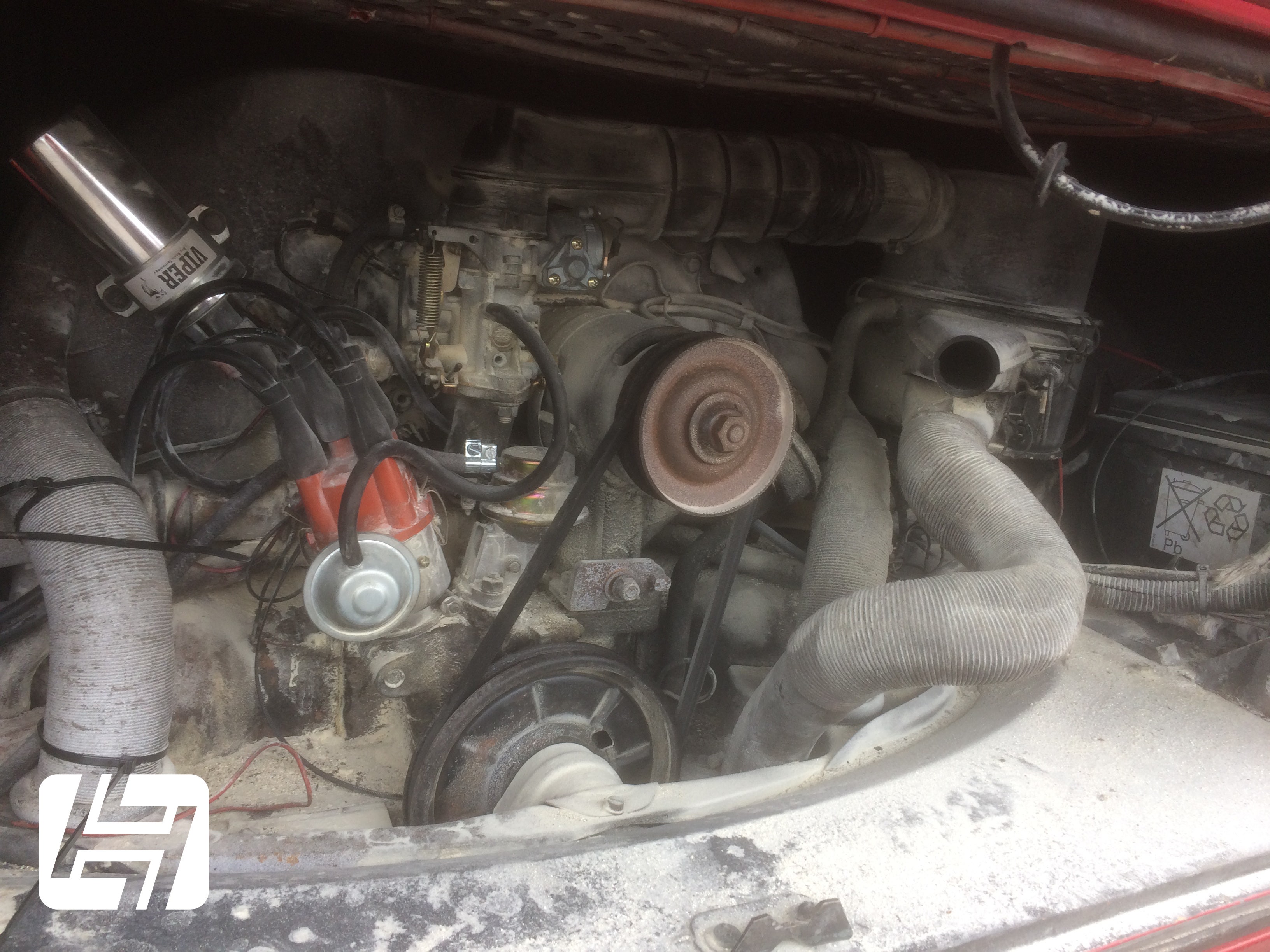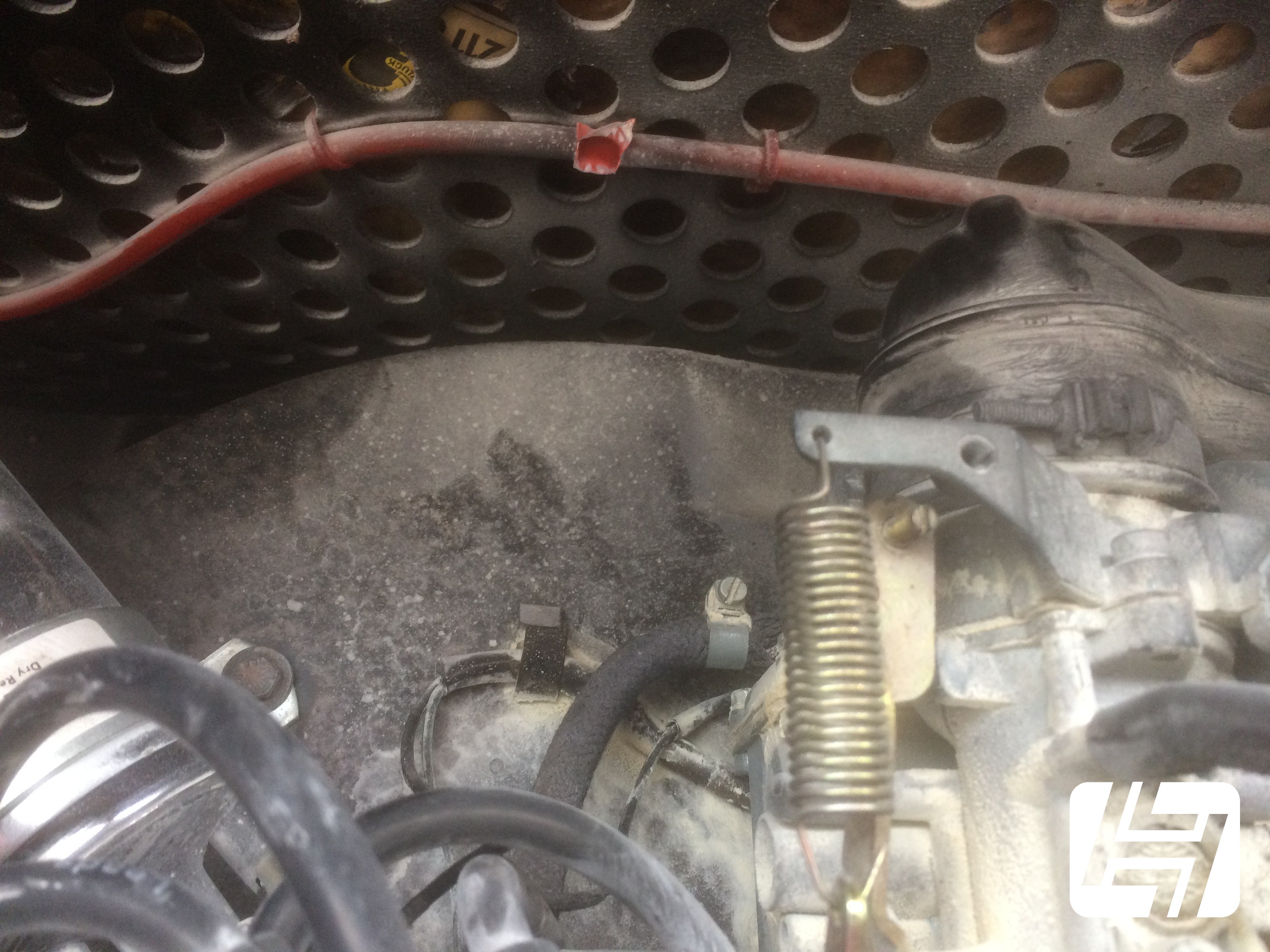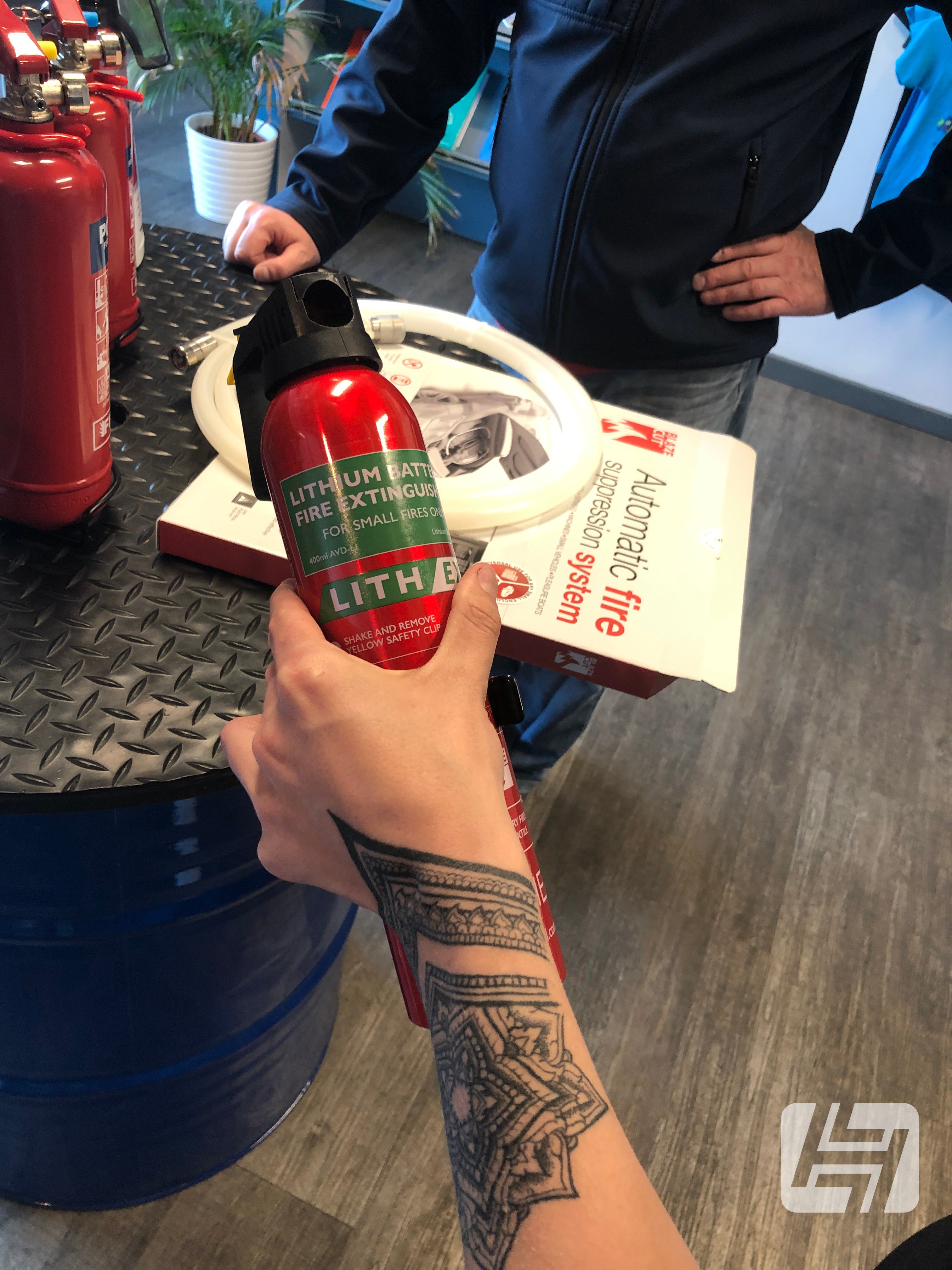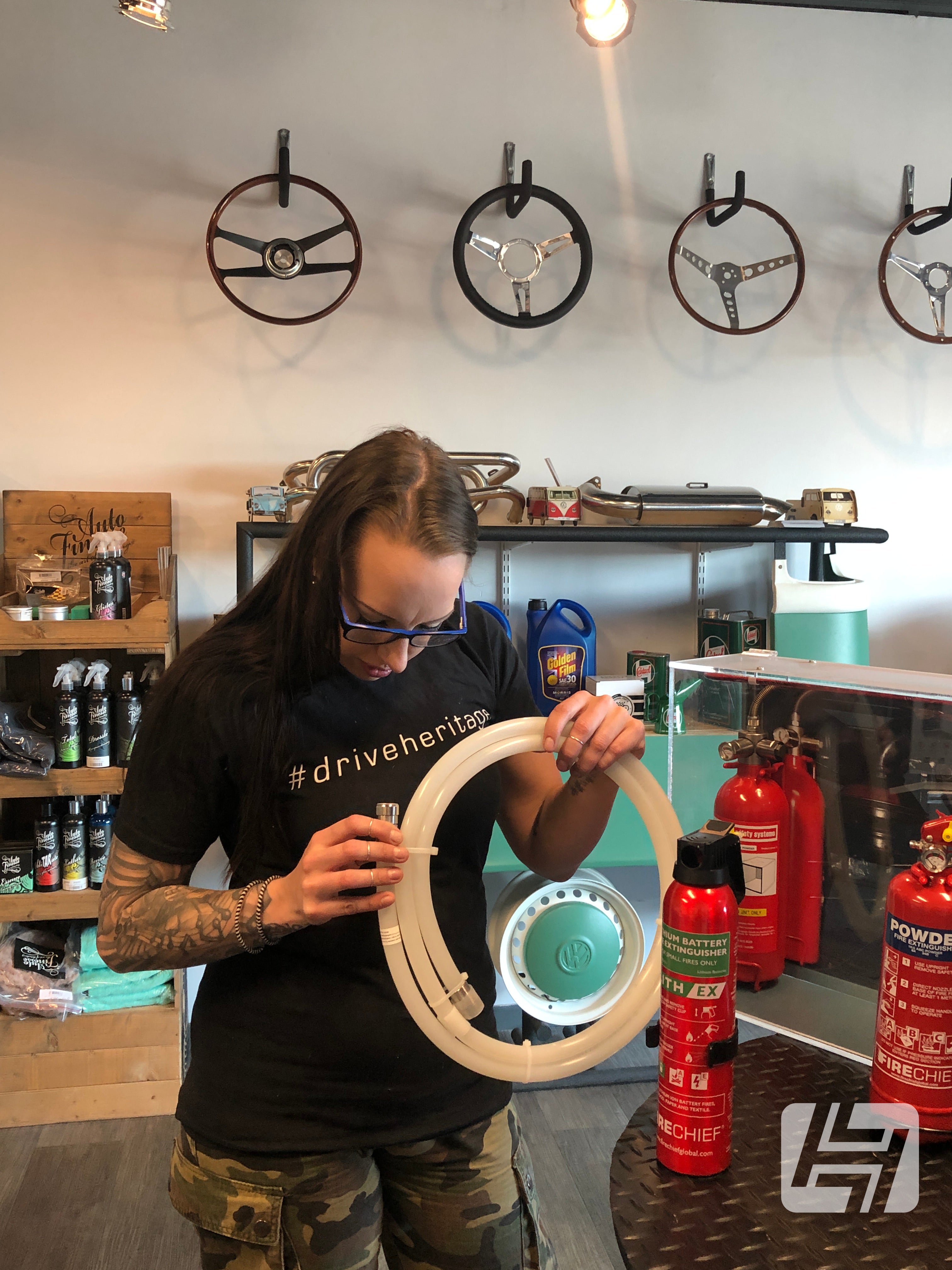How to: Choose the correct classic car fire extinguisher
Whether you drive a Golf, a Beetle, a Porsche or a Campervan the threat of fire is only a split fuel hose or a rogue spark away from reality. Social Media reminds us more-than-monthly that fires do happen, and it can completely wreck a vehicle in minutes. But regardless of these harrowing images, have we actually done anything to stop our vehicles being next?


How to solve a problem like fire?
There are three ways to approach this - we'll cover two of them quickly. 1) "It won't happen to me..." Is your vehicle that bad that it's really worth the risk? 2) "It won't happen to me, I've got all new x, y and z fitted". Great work doing this, but sadly, the truth is, it still could, and is it worth the risk? 3) You carry a fire extinguisher, and even better, fit an automated system too, so should the hot stuff turn up you are suitably prepared to put it out. Take a look at these pictures from Heritage customer Mr Oliver, who fitted one of our DAUS systems to his Type 2. "The first time I knew it had gone off, was when I saw smoke in the rear view mirror and coming through the vents. In fact, it turned out to be powder from the extinguisher that had already activated itself." Needless to say, we've just sent him another one to fit back into the bus, should he be unlucky twice in a row.


Three is the magic number
Of course, we'll focus on answer #3 from above and the whole point to this post is about being suitably prepared (with both knowledge and equipment). No one plans to have a fire - but if one starts - have the right equipment to deal with it quickly and effectively. Save yourself the hassle of insurance claims, potential loss of earnings, and a hefty rebuild bill - that's if your car is even salvageable at all.
Knowledge is powder...
Product Specialist Anna explains more. "There are a few different types of Fire Extinguisher for use in Cars and Campers - Powder, Gas and Foam. Each is typically available in hand held versions, and both gas and powder as fully automated 'fit and forget' systems that will go off on their own, should a fire start". Gas is chosen for its cleanliness. The powder covers the most applications, although it is messier than gas and is harmful to inhale in enclosed spaces - such as a campervan interior. Foam is a more environmentally friendly option and favoured by many for A and B rated fires.

It's in your hands
Mark, our resident T4 expert walks us through the various handheld options that Heritage now offer. "We have Powder fire extinguishers in varying sizes: 600g, 800g and 1kg. These can be used on paper and wood (class A) flammable liquids, like fuel and paint (class B) and with gas bottles etc (class C). We have a specific 400ml fire extinguisher for battery and electrical fires, not to mention a 1-litre foam for class A and B fires." Anna tells us a little more about the Lith-Ex product "This fire extinguisher is designed specifically for fires with mobile phones, leisure batteries, laptops etc. Electrical products with Lithium batteries have a much higher burning temperature, so this specific fire extinguisher brings that right down, as well as putting the fire out".


Get yourself covered
If you are cooking in your van, then a Fire Blanket is a very wise purchase. Should the stove catch fire, simply open the blanket and throw it over the flames. The blanket works by preventing oxygen getting to the fire, and so puts the fire out, without the need for discharging (and later cleaning up) a canister extinguisher in a confined space.

Material grill
Another product that may be new to you is a Fire Retardant Spray and it's designed specifically for interior furnishings and fabrics. Perfect for aged camper trim, or DIY curtains and seat covers that may not necessarily meet current safety standards. Simply spray on all fabric surfaces and consider yourself protected. It won't stop them burning - but will draw it out, giving you valuable time to fight the fire, or at worst evacuate.


Automatic for the people
For a few hundred pounds you could fit a fully automatic fire extinguisher system such as the DAUS or Blaze Cut products we stock. The big difference between the two is the presence of a canister.

The DAUS system, as fitted by Mr Oliver has a 1kg bottle of dry powder that is positioned in the engine bay, and then a pressurised trace tube is attached to the roof of the engine bay (or bonnet). Should a fire start, the pressure tube will melt in the hottest place (above the fire) and discharge the powder as the photos above illustrate.


If space is tight, and you don't have a fixed engine bay 'roof' to attach the trace tube to, the Blaze Cut system is ideal. It is thicker in diameter than the DAUS but doesn't require a separate gas or powder canister. The whole tube is quickly attached to your bonnet or deck lid with cable ties, and for the next 10 years will remain ready for action. Depending on requirements this is available as both a 2 metre and 3-metre fire extinguisher tube kit.

Have something, not nothing
We must admit, it takes a little bit of time to get your head around all the options and what does what. The crucial thing is, you have something that is able to fight a fire in your vehicle at all times. Check out the range in full below, and should you have more questions please do get in touch.




 Beetle
Beetle
 T2 Bay
T2 Bay
 T2 Split
T2 Split
 T25
T25
 Transporter T4
Transporter T4
 Transporter T5
Transporter T5
 Golf Mk1
Golf Mk1
 Golf Mk2
Golf Mk2


 911
911
 996
996
 997
997
 986 Boxster
986 Boxster
 987 Boxster
987 Boxster
 912
912
 944
944
 924
924


 Defender
Defender
 Discovery Series 1
Discovery Series 1
 Discovery 2
Discovery 2
 Series 1, 2 & 3
Series 1, 2 & 3
 Freelander
Freelander
 Freelander 2
Freelander 2










